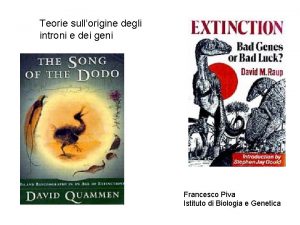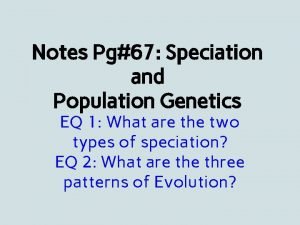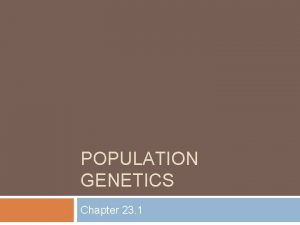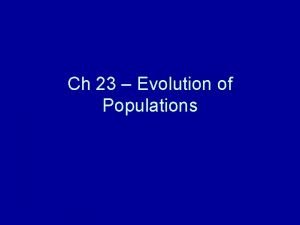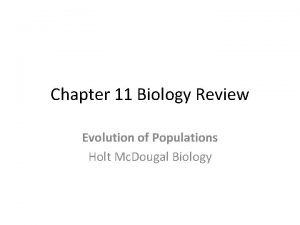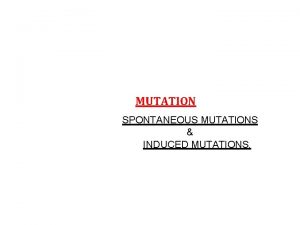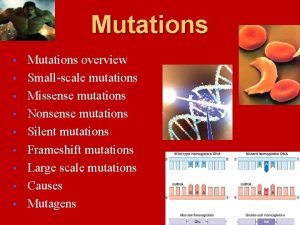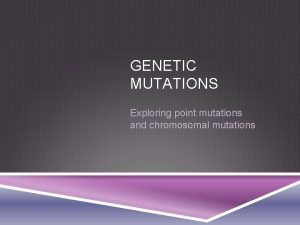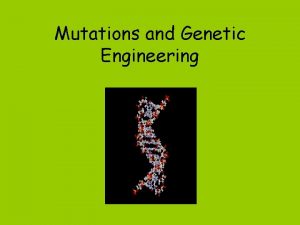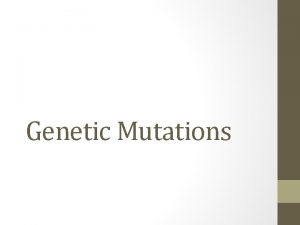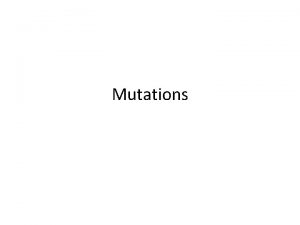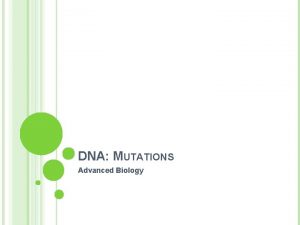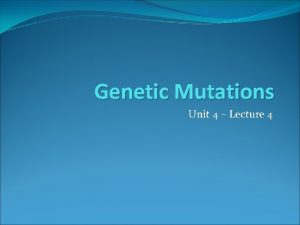Evolution of Populations Genetic Variation mutations genetic shuffling












- Slides: 12

Evolution of Populations

Genetic Variation mutations genetic shuffling Natural selection allele frequencies changes evolution

Example Red lizards ◦ more visible to predators less likely to survive and reproduce allele for red coloring become rare Black lizards ◦ absorb more sunlight warm up faster move faster to feed and avoid predators produce more offspring Alleles for black become common

Natural Selection on Polygenic Traits Direction Selection: individuals at one end of the curve have higher fitness ◦ beak size & thickness

Beak Size in Birds

Natural Selection on Polygenic Traits Stabilizing Selection - individuals near the curve’s center have higher fitness ◦ Size of baby at birth

Natural Selection on Polygenic Traits Disruptive Selection - individuals at the upper and lower ends of the curve have higher fitness ◦ Environment with few medium size seeds


Genetic Drift Small population ◦ individuals with a particular allele may leave more descendants by chance ◦ With more chance occurrences ◦ an allele to become common in a population. Founder Effect: allele frequencies change due to a subgroup’s migration

Genetic Drift

Hardy – Weinberg Principle allele frequencies remain constant unless factor(s) change frequencies Requirements of Hardy-Weinberg ◦ ◦ ◦ random mating very large population no movement in or out of the population no mutations no natural selection

Speciation: new species formation Reproductive Isolation: 2 populations cannot interbreed and produce fertile offspring Behavioral Isolation ◦ Different courtship rituals ◦ Different reproductive strategies Geographic Isolation ◦ geographic barriers; rivers, mountains Temporal Isolation ◦ reproduce at different times of the year
 Stabilizing selection human birth weight
Stabilizing selection human birth weight Evolution of populations section 16-1 genes and variation
Evolution of populations section 16-1 genes and variation Exon shuffling spiegazione
Exon shuffling spiegazione Oligonucleotide directed mutagenesis
Oligonucleotide directed mutagenesis Caeccum
Caeccum Genetic drift
Genetic drift What is the difference between genetic drift and gene flow
What is the difference between genetic drift and gene flow Genetic drift in small populations
Genetic drift in small populations Chapter 23: the evolution of populations
Chapter 23: the evolution of populations Why are populations the smallest unit of evolution
Why are populations the smallest unit of evolution Section 16-1 genes and variation
Section 16-1 genes and variation Chapter 16 evolution of populations vocabulary review
Chapter 16 evolution of populations vocabulary review Evolution of populations section 11 review
Evolution of populations section 11 review


